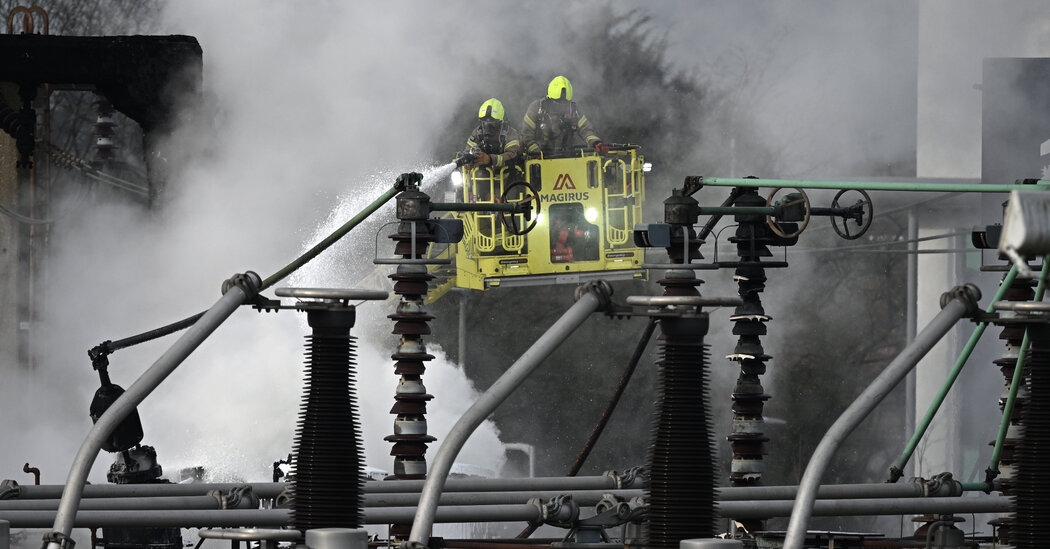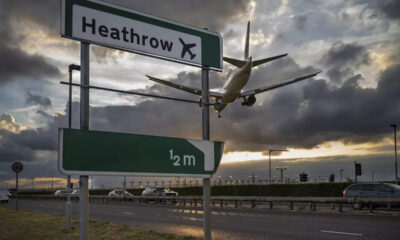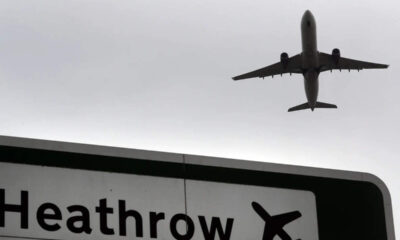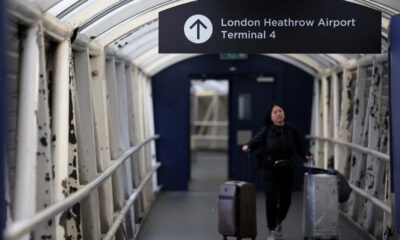Breaking News
A Fire Plunged Heathrow Into Darkness. A Nearby Data Center Kept Humming. Why?

A newly built data center is located just a short distance from the electric substation that caused a power outage at Heathrow Airport last week. The data center itself lost power that day, but its backup systems seamlessly took over to ensure uninterrupted operations.
In contrast, it took Heathrow Airport nearly 18 hours to restore full functionality after the power failure, highlighting the vulnerability of Britain’s infrastructure. Energy experts attribute this stark difference in response time to the financial investments made by the respective industries.
While data centers prioritize the cost of potential failures and invest in robust backup systems, most airports, including Heathrow, have been reluctant to make significant investments in total backup systems. Even a large airport like Heathrow could implement backup systems capable of maintaining normal operations during a catastrophic power failure, but the high cost and time required have deterred many airports from doing so.
The cost of implementing comprehensive backup systems at airports like Heathrow could amount to $100 million and take several years to complete. The decision not to make this investment is often based on a cost-benefit analysis, with many airports assuming that the expense is too high.
The Airport
Heathrow Airport has backup power for critical systems like runway lights and traffic control safety systems. However, the rest of the airport, including terminals, shops, and walkways, was left without power during the outage, causing significant disruptions.
Heathrow Airport, initially opened at the end of World War II, has undergone multiple expansions and updates over the years. This has resulted in a mix of older and newer electrical systems that struggle to meet the increasing power demands of the airport.
Heathrow lacks backup generators capable of supplying the 40 megawatts of power needed during peak times to maintain normal operations. After the recent power failure, engineers had to manually reroute power from another substation, causing delays in restoring power to the airport’s systems.
The Substation
The primary power source for Heathrow Airport is the Hyde North substation, owned by National Grid Electricity Distribution. The substation’s transformers were affected by the fire, leading to the power outage at the airport.
The cause of the fire at the Hyde North substation is under investigation, with no evidence of suspicious activity found so far. National Grid’s chief executive stated that there was no lack of capacity in the area after the fire, emphasizing the reliability of the power supply.
Heathrow Airport had to rely on power from nearby substations after losing connection to the Hyde North substation. The airport’s management is now considering investing in additional resilience measures to prevent future power failures.
The Data Center
Nearby, the Union Park data facility operated by Ark Data Centres demonstrated resilience during the power outage. The facility seamlessly switched to backup power sources, highlighting the importance of preparedness in critical infrastructure.
The decision to invest in robust backup systems is crucial for ensuring uninterrupted operations in critical infrastructure like airports and data centers. While retrofitting older facilities can be challenging and costly, the long-term benefits of resilience far outweigh the initial investment.
The Decision
Government officials and industry experts emphasize the importance of prioritizing resilience in infrastructure to prevent future disruptions like the one experienced at Heathrow Airport. Investing in backup systems and maintaining reliable power sources is key to avoiding similar incidents in the future.
The challenge lies in finding the funding for electrical upgrades while balancing high energy costs that impact consumers. Newer airports and facilities have integrated backup systems to ensure continuous operations, setting a precedent for older facilities like Heathrow to follow suit.
Experts suggest that investing in resilience is essential for mitigating the risks of future power failures, even if the upfront costs may seem prohibitive. Retrofitting existing infrastructure to meet modern standards is a necessary step in safeguarding critical systems from potential disruptions.
-

 Destination6 months ago
Destination6 months agoSingapore Airlines CEO set to join board of Air India, BA News, BA
-

 Breaking News8 months ago
Breaking News8 months agoCroatia to reintroduce compulsory military draft as regional tensions soar
-

 Tech News10 months ago
Tech News10 months agoBangladeshi police agents accused of selling citizens’ personal information on Telegram
-

 Breaking News8 months ago
Breaking News8 months agoBangladesh crisis: Refaat Ahmed sworn in as Bangladesh’s new chief justice
-

 Gaming7 months ago
Gaming7 months agoThe Criterion Collection announces November 2024 releases, Seven Samurai 4K and more
-

 Toys10 months ago
Toys10 months ago15 of the Best Trike & Tricycles Mums Recommend
-

 Toys8 months ago
Toys8 months ago15 Best Magnetic Tile Race Tracks for Kids!
-

 Guides & Tips8 months ago
Guides & Tips8 months agoHave Unlimited Korean Food at MANY Unlimited Topokki!
























